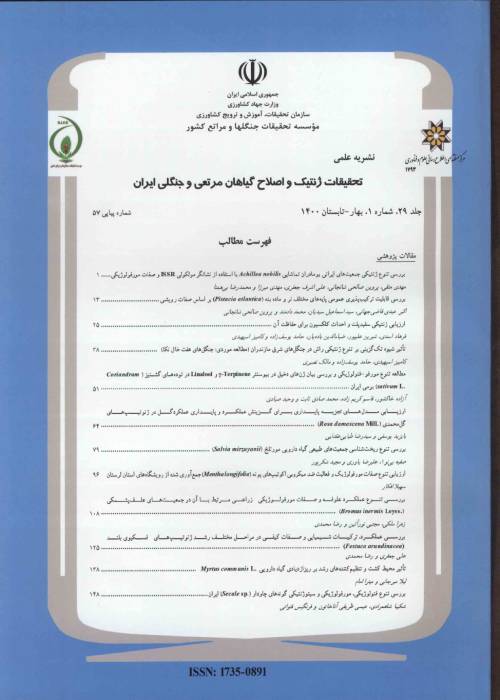Identification and investigation of the expression of some conserved microRNAs involved in the biosynthesis pathway of Withanolides in Ashwagandha
Withania somnifera, known as Indian ginseng, is a small evergreen shrub that grows in tropical and subtropical regions and belongs to the Solanaceae family. The major constituents of W. somnifera are withanolides, including withafrin A, withanolide D, withanolide A, and withanones. Withanolide A and withanones are primarily synthesized in the roots, while withafrin A and withanones are mainly produced in the leaves. The genes responsible for the appropriate metabolic pathways, such as farnesyl pyrophosphate (FPP), cycloartenol synthase (CAS), sterol methyltransferase (SMT1), and hydroxymethylglutaryl coenzyme A reductase (HMGR) along with non-coding RNAs are essential for the biosynthesis of these compounds. These non-coding RNAs play critical roles in controlling gene expression and enzyme activity. In general, miRNAs are a class of small regulatory RNAs which negatively regulate gene expression at the post-transcriptional level by binding target mRNAs for mRNA cleavage or inhibition of mRNA translation. Many investigations have shown that miRNAs play an essential role in various biological and metabolic processes in plants. This study was aimed to the identification and investigation of the expression of some conserved microRNAs involved in the biosynthesis pathway of Withanolides in W. somnifera.
For HPLC analysis, a high-performance liquid chromatography system coupled with an ELSD detector, model C-650, was employed. Conserved miRNAs in W. somnifera were identified using BLASTn with a criterion of up to four mismatches and an E-value < 10, based on RNA-seq data and homology analysis conducted by C-mii software. The secondary structure of several miRNAs was determined using Mfold software. The target genes of these potential miRNAs were predicted using psRNATarget, applying the following criteria: In order to determine the function of the target genes, the BLASTx program was used against the protein database with the following parameters: E-value > 1.0E-5, a range of missing central bases between 10 and 11 nucleotides. Samples were collected from leaf and root tissues of three genotypes of W. somnifera (W1 - 7629245, W3 - 7629241, and W4 - 7629244) during the flowering stage. Three technical and biological replicates were used for data collection. The expression levels of miRNA5021 and its target gene SMT1 and miRNA5140 were analyzed using real-time PCR. The 2-ΔΔ CT method was employed to analyze the expression data.
According to the statistical analysis of the HPLC data, there was no statistically significant difference in the amounts of withaferin-A among the three genotypes (W1, W3, and W4). Among the examined tissues, the leaf of W3 exhibited the highest amount, while the root of W1 had the lowest amount. To identify the miRNAs in W. somnifera, the transcriptome sequences were compared to plant miRNAs using the miRbase website for BLAST homology search. The results obtained from the RT-qPCR method showed that the relative expression levels of miR5021 in W1 roots were 1.16, 1.37, and 1.17 times higher compared to the control (W1 leaf tissue), while they were 1.3 and 3.7 times lower in W3 and W4 leaves, respectively. In the roots of the three genotypes of W. somnifera, the expression of the SMT1 gene decreased by 7.7, 2.8, and 4.0 fold, respectively. However, in the leaves of genotypes W3 and W4, the expression increased by 2.48 and 1.82 times, respectively, compared to the control. The statistical analysis for miRNA5021 and miRNA5140 revealed that in the leaves of W3, the relative expression of miR5140 was 1.57, while in W4, it remained unchanged. In the roots of W1, W3, and W4, there was a decrease in miR5140 expression by seven, nine, and three times, respectively, compared to the control.
In general, regarding the regulatory role of the identified miRNAs in the present study, these genes could be used to better and more accurately identify the withanolides biosynthetic pathway.
- حق عضویت دریافتی صرف حمایت از نشریات عضو و نگهداری، تکمیل و توسعه مگیران میشود.
- پرداخت حق اشتراک و دانلود مقالات اجازه بازنشر آن در سایر رسانههای چاپی و دیجیتال را به کاربر نمیدهد.


